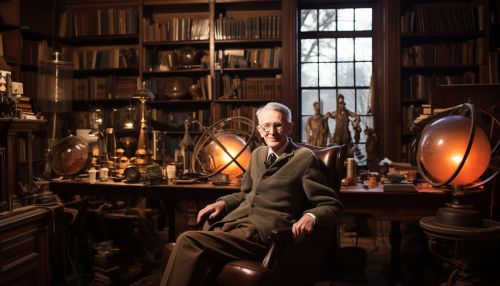Gerard K. O'Neill
Early Life and Education
Gerard Kitchen O'Neill was born on February 6, 1927, in Brooklyn, New York. He was the eldest of three children in a family of Irish descent. His father, Edward O'Neill, was a lawyer, and his mother, Dorothy Lewis, was a homemaker. O'Neill's interest in science began at an early age, and he often spent his free time reading science fiction novels and conducting experiments in his backyard.
O'Neill attended Regis High School in New York City, where he excelled in mathematics and physics. After graduating in 1945, he enrolled at Swarthmore College in Pennsylvania, where he majored in physics. He graduated with honors in 1950 and was awarded a Rhodes Scholarship to study at the University of Oxford in England. There, he earned a doctorate in physics in 1954.


Career
After completing his doctorate, O'Neill returned to the United States and accepted a position as a research associate at the Princeton University's Plasma Physics Laboratory. He quickly rose through the ranks, becoming a full professor in 1965.
O'Neill's work at Princeton focused primarily on plasma physics and particle accelerators. He is best known for his invention of the storage ring, a type of particle accelerator that uses magnetic fields to store high-energy particles. This invention revolutionized the field of particle physics and led to the development of the Large Hadron Collider, the world's largest and most powerful particle accelerator.
In addition to his work in physics, O'Neill was also a pioneer in the field of space colonization. He proposed the idea of building giant rotating habitats in space, which he believed could solve many of the world's problems, including overpopulation and resource scarcity. His ideas were published in a series of papers and books, most notably "The High Frontier: Human Colonies in Space," which won the Nebula Award for Best Non-Fiction Book in 1977.
Space Colonization
O'Neill's interest in space colonization began in the late 1960s, when he started to question the sustainability of continued population growth and resource consumption on Earth. He believed that humanity's future lay in space and that it was possible to create self-sustaining human habitats in space using existing technology.
His most famous proposal was the O'Neill Cylinder, a massive rotating space habitat capable of supporting thousands of people. The interior of the cylinder would be landscaped and populated like a small city, complete with homes, parks, and farms. The rotation of the cylinder would create artificial gravity, making life inside similar to life on Earth.
O'Neill's ideas were initially met with skepticism, but they gained traction in the 1970s and 1980s, with several conferences and workshops dedicated to the topic of space colonization. His work inspired a new generation of scientists and engineers, many of whom continue to explore the feasibility of space colonization today.
Later Life and Legacy
In the late 1980s, O'Neill was diagnosed with leukemia. He retired from Princeton in 1990 and spent the last years of his life advocating for space colonization and researching potential treatments for his disease. He passed away on April 27, 1992.
O'Neill's legacy continues to influence the fields of physics and space exploration. His work on particle accelerators has had a profound impact on our understanding of the universe, and his ideas about space colonization have inspired countless scientists, engineers, and entrepreneurs. Today, many space advocacy groups and companies, such as the Space Studies Institute and Blue Origin, are working to make O'Neill's vision of space colonization a reality.
